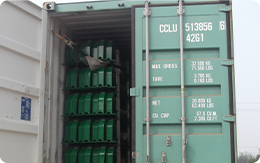 Afrikaans
Afrikaans  Albanian
Albanian  Amharic
Amharic  Arabic
Arabic  Armenian
Armenian  Azerbaijani
Azerbaijani  Basque
Basque  Belarusian
Belarusian  Bengali
Bengali  Bosnian
Bosnian  Bulgarian
Bulgarian  Catalan
Catalan  Cebuano
Cebuano  Corsican
Corsican  Croatian
Croatian  Czech
Czech  Danish
Danish  Dutch
Dutch  English
English  Esperanto
Esperanto  Estonian
Estonian  Finnish
Finnish  French
French  Frisian
Frisian  Galician
Galician  Georgian
Georgian  German
German  Greek
Greek  Gujarati
Gujarati  Haitian Creole
Haitian Creole  hausa
hausa  hawaiian
hawaiian  Hebrew
Hebrew  Hindi
Hindi  Miao
Miao  Hungarian
Hungarian  Icelandic
Icelandic  igbo
igbo  Indonesian
Indonesian  irish
irish  Italian
Italian  Japanese
Japanese  Javanese
Javanese  Kannada
Kannada  kazakh
kazakh  Khmer
Khmer  Rwandese
Rwandese  Korean
Korean  Kurdish
Kurdish  Kyrgyz
Kyrgyz  Lao
Lao  Latin
Latin  Latvian
Latvian  Lithuanian
Lithuanian  Luxembourgish
Luxembourgish  Macedonian
Macedonian  Malgashi
Malgashi  Malay
Malay  Malayalam
Malayalam  Maltese
Maltese  Maori
Maori  Marathi
Marathi  Mongolian
Mongolian  Myanmar
Myanmar  Nepali
Nepali  Norwegian
Norwegian  Norwegian
Norwegian  Occitan
Occitan  Pashto
Pashto  Persian
Persian  Polish
Polish  Portuguese
Portuguese  Punjabi
Punjabi  Romanian
Romanian  Russian
Russian  Samoan
Samoan  Scottish Gaelic
Scottish Gaelic  Serbian
Serbian  Sesotho
Sesotho  Shona
Shona  Sindhi
Sindhi  Sinhala
Sinhala  Slovak
Slovak  Slovenian
Slovenian  Somali
Somali  Spanish
Spanish  Sundanese
Sundanese  Swahili
Swahili  Swedish
Swedish  Tagalog
Tagalog  Tajik
Tajik  Tamil
Tamil  Tatar
Tatar  Telugu
Telugu  Thai
Thai  Turkish
Turkish  Turkmen
Turkmen  Ukrainian
Ukrainian  Urdu
Urdu  Uighur
Uighur  Uzbek
Uzbek  Vietnamese
Vietnamese  Welsh
Welsh  Bantu
Bantu  Yiddish
Yiddish  Yoruba
Yoruba  Zulu
Zulu Understanding the Effects of Roller Impact on Surface Materials and Structural Integrity
The Roller Impact Unraveling Its Significance and Applications
Roller impact, a term often encountered in the realms of engineering, machinery, and sports, refers to the interaction between a roller or cylindrical object and a surface or object it impacts. This phenomenon can manifest in various industries, from manufacturing to entertainment, each presenting unique challenges and considerations.
Understanding Roller Impact
At its core, roller impact involves dynamic forces generated when a roller contacts another surface. This interaction is characterized by factors such as speed, angle of impact, material properties, and environmental conditions. The effects of roller impact can range from predictable behavior to unpredictable outcomes that require in-depth analysis and engineering solutions.
In mechanical engineering, for instance, roller impact plays a critical role in the design and functionality of numerous machines. Conveyors, for example, utilize rollers to facilitate the movement of materials. The impact and friction between the roller and the object being moved can influence efficiency, wear and tear, and ultimately, the longevity of both the roller and the conveyor system. Therefore, understanding roller impact is essential for optimizing performance and reducing maintenance costs.
Applications Across Industries
1. Manufacturing and Material Handling In factories, rollers are employed in conveyor systems to transport products. The design of these rollers must account for the roller impact to minimize energy consumption and avoid material damage. Advanced simulations and impact testing can predict how rollers will behave under various loads, enabling engineers to design more robust systems.
2. Sports and Recreational Activities Roller impact is prominently featured in sports like roller hockey, skateboarding, and roller derby. The design of roller skates, for example, must consider the impact forces during turns and jumps. Materials used in the rollers must provide adequate grip and durability to withstand repeated impacts without compromising performance.
roller impact

3. Transportation Roller impact also plays a significant role in the automotive industry, particularly in the design of tires and wheel assemblies. The interactions between tires and roads involve considerable roller impact dynamics. Engineers must analyze how different tread patterns and tire materials respond to these forces to enhance safety and improve fuel efficiency.
4. Civics and Recreation Infrastructure Roller impact is not limited to industrial applications; it is also crucial in the construction of recreational spaces such as skate parks. Designers must consider how the surfaces of ramps and obstacles will interact with roller skates or skateboards, ensuring safety and optimal performance for users.
Challenges and Innovations
Despite its widespread relevance, roller impact presents numerous challenges. Engineers must navigate issues such as wear and fatigue, particularly when materials are subjected to significant stress over time. Innovations in materials science, such as the development of composites and smart materials, offer new ways to enhance the performance of rollers while mitigating adverse effects of impact.
Furthermore, advancements in simulation technologies and computational mechanics have revolutionized the way roller impact is analyzed. Engineers can now model complex interactions in a virtual environment, significantly reducing the time and cost associated with physical prototyping and testing.
Conclusion
The significance of roller impact transcends traditional applications, influencing areas as diverse as manufacturing, sports, and transportation. With its far-reaching implications, understanding roller impact is pivotal in designing efficient systems that withstand the rigors of their respective environments. As technological advancements continue to emerge, the study of roller impact will undoubtedly evolve, paving the way for innovations that enhance performance and safety across various sectors. As we delve deeper into this fascinating aspect of physics and engineering, it becomes clear that the impact of rollers is far more than just a physical phenomenon; it is a critical component of our engineered world.
-
Trusted Conveyor Solutions from Leading Conveyor Idler Roller ManufacturersNewsJun.27,2025
-
Reliable Return Idler Solutions for Efficient Belt Conveyor SystemsNewsJun.27,2025
-
Precision Conveyor Accessories for Streamlined Material HandlingNewsJun.27,2025
-
High-Quality Belt Conveyor Idler Solutions for Efficient Material HandlingNewsJun.27,2025
-
High-Performance Belt Conveyor Pulleys for Reliable Material HandlingNewsJun.27,2025
-
Enhancing Material Handling EfficiencyNewsJun.27,2025





























